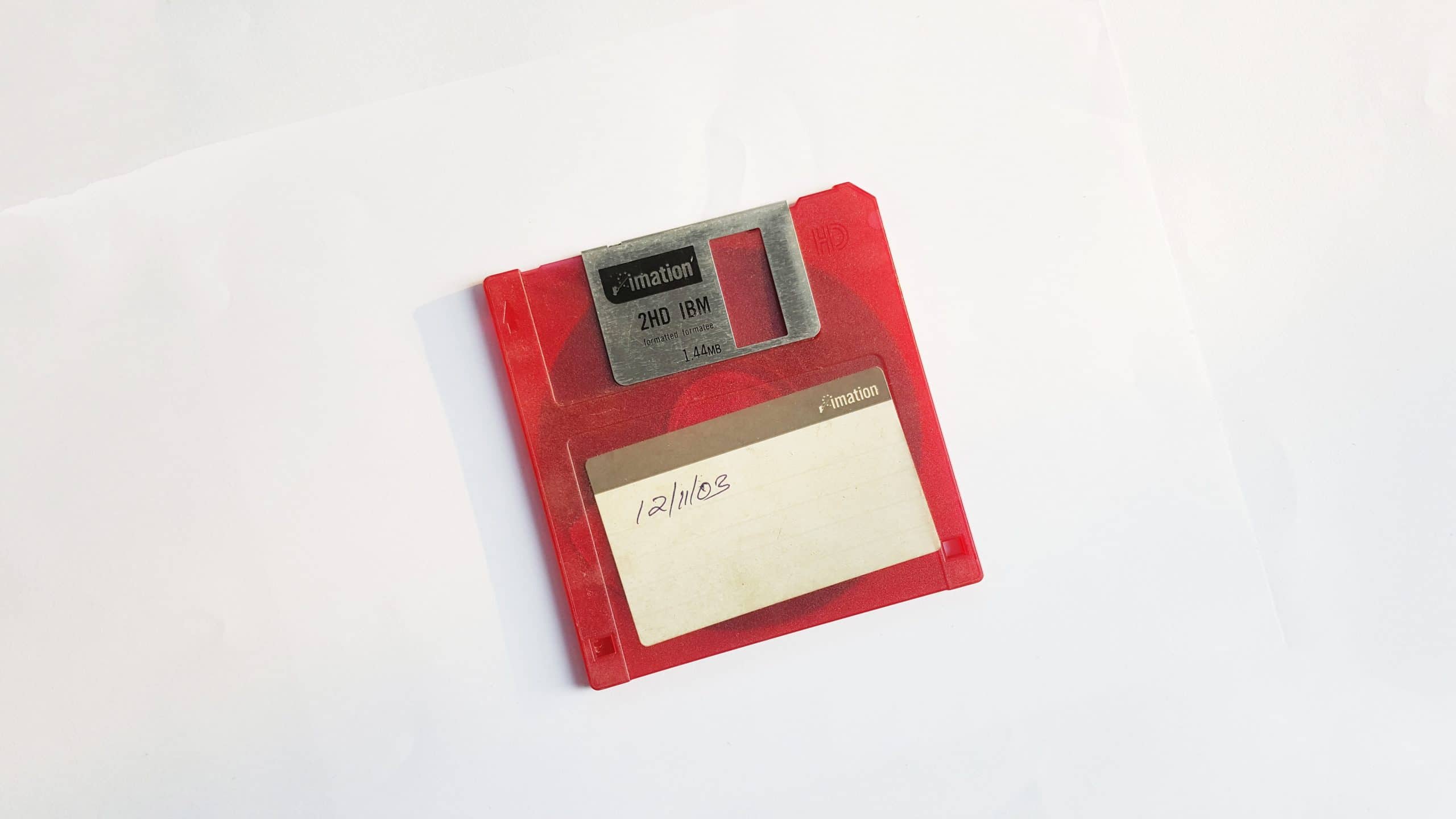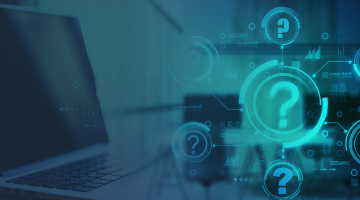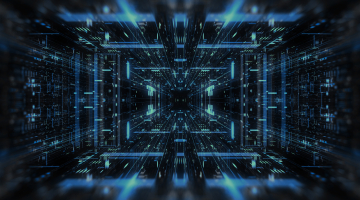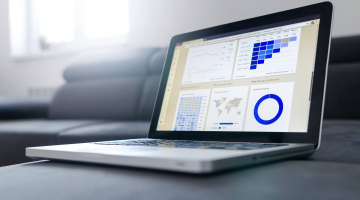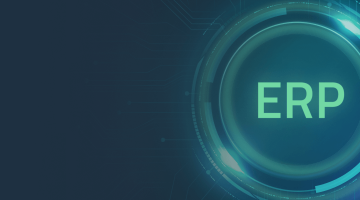

Staying with legacy ERP or staying alive: A vital choice
The pace of technological progress in the early third millennium is so rapid that new inventions and discoveries seem to crop up almost every week. It is especially true in the IT realm, where state-of-the-art know-how appears and spreads not in ripples but waves, sometimes growing into a tsunami. If for ordinary people, keeping abreast of new digital advancements is an issue of staying trendy, it is effectively a matter of survival for businesses.
Being aware of the utmost importance of introducing modern approaches into their workflow, many companies, however, tend to cling to time-honored practices and technologies. And the bigger the organization is the greater this reluctance to adopt something new can be since its CEOs realize too well what nuisance the switch-over will become. We at DICEUS have often witnessed them delay this unpleasant moment as long as they dare, yet obsolete equipment and legacy software are doomed to extinction anyway. Enterprise resource planning (ERP) systems are subject to this universal generational change, as well.
Legacy ERP systems scrutinized
The first legacy ERP system examples date back to the late 1980s and were niche solutions that mostly helped to streamline and automate bookkeeping processes like accounts payable, accounts receivable, etc. Later, they have extended their scope, growing into departmental software (manufacturing, finance, procurement, HR). This list of legacy ERP systems technologies comprises such platforms as Progress Software, DOS, IBM AS/400, and others whose primitive UI were character-based and functioning mechanisms were extremely customized and, thus, hardly susceptible to changes.
Generally, the lion’s share of what is called legacy ERP systems is a kind of homemade software run on on-premises hardware that is maintained and managed by in-house personnel. Typically, such solutions aren’t supported or updated by their developers and don’t communicate with each other.
Trying to prolong the life cycle of such platforms, local IT departments oftentimes continue to supply them with application code, although the underlying technology is inveterately outdated. Moreover, savvy IT specialists attempt to revamp their UI (by and large, employing Windows clients) and bolt analytical and reporting tools onto them to enhance their business intelligence power. Yet, all these measures are a collection of band-aids that can sustain legacy systems’ functioning only for a little while, and each failure makes their shortcomings ever more patent.
What is wrong with ERP legacy systems?
There are several issues accompanying the employment of legacy ERP that are getting more aggravated as new challenges keep emerging.
Mounting expenditures
Enterprise solutions are never a nickel-and-dime venture, but with legacy software, the initial high price is going to become crushingly inordinate. As any aging item, legacy ERP will demand additional investments into the upkeep of the on-premise infrastructure and equipment typically set up when cost-effectiveness of machinery wasn’t the major priority for its owners. Moreover, its updating, as well as software license renewals, will spell an additional appropriation title.
And we shouldn’t forget about the salary of in-house teams that maintain it, renting facilities to house the hardware with legacy ERP, paying for electricity to power it, and other related spendings that are only going to accrue as long as you keep using it.
Problematic maintenance
ERP legacy system support by the vendors who developed it peters out as the years go by. Updates will soon stop forthcoming, so your IT guys will find it tough to handle issues that are sure to pop up.
A similar development awaits the in-house support personnel. When someone leaves you, you will be hard-pressed to find specialists knowing the secrets of dealing with the system as old as the hills, and still fewer those who will be eager to learn how to do it. Naturally, who would like to excel at mastering a counting frame when the whole world is using tablets?
And the more you stave off the imminent changes, the harder the transition will be. The vast amount of data to be migrated will gradually grow into unwieldy, posing a formidable task for experts who would undertake the endeavor.
Non-existent integration capacity
Any manager wants changes (however necessary or promising they might be) to affect their organization’s business routine as little as possible, so it is natural for them to attempt to integrate their legacy ERP with the fresh software that is being adopted by the company. But nine times out of ten, modern solutions are incompatible with legacy systems. When integration is feasible, slews of custom code writing must be involved, which turns integration efforts into cost- and time-consuming exercise.
A seemingly simple solution would be introducing a new system that will work alongside the legacy one. This common mistake for many businesses struggling to retain old practices leads to data silos that hamper free access to information by all departments and thus hamstring the efficiency of the workflow.
Jeopardized security
If you stick to good old ways, cybercriminals don’t stay put but are getting ever more sophisticated. With legacy systems that don’t receive any updates, the question of a devastating ransomware attack and/or data leakage is not “if” but rather “when”. Even the committed efforts of respective specialists to close all bottlenecks and loopholes in the security shield will yield no result when this protection is not up to the task. And don’t forget about the money you will have to spend (waste?) on such a futile whack-a-mole game.
Crippled business growth
ERP legacy solutions are notorious for their rigidity, depriving them of flexibility that is a serious game-changer in the modern competitive business environment. Moreover, such software was created when companies tended to deal locally. The globalization of market reach requires a different approach utilizing cloud-based solutions that can help you interact with foreign or even overseas suppliers and customers. With legacy ERP, such endeavors are doomed to defeat.
All of these can be warded off by modernizing your ERP.
Benefits of modernized ERPs: A brief outline
Being a seasoned player in the market of software modernization, DICEUS sees plenty of perks in taking a quantum leap with your ERP and hydrating the cloud.
- Cutting down on cost. Of course, you will have to pay for renting cloud facilities and using their software. But these expenditures fall utterly short of the sums you regularly fork out to support your legacy software and keep on your payroll a team of specialists to do it.
- Scalability. Your cloud-powered ERP will be able to grow with your company since you can always rack it up whenever your organization expands.
- Adaptability. When new technologies (like IoT or 3D printing) push their way in, it is the responsibility of the vendor to allow customers to make use of them. Vying for their market share, providers are eager to furnish this opportunity to their clients.
- Integration-friendliness. You can easily couple your modernized ERP with CRM, EDW, various apps, and other state-of-the-art know-how aimed at introducing profound digitalization into your business practices. Moreover, information entered into one of those systems will become immediately available for the users of others.
- Availability of big data opportunities. Modernization of your legacy ERP will allow you to leverage business intelligence and analytics grounded on big data. Such innovations can procure a 360-degree view of your customers and full transparency of your employees’ efforts, tremendously augmenting your decision-making power.
- Centralization and accessibility of data. Stored in one virtual place, the information of your ERP can be easily obtained by stakeholders through any internet-connected device. In the age of extreme workforce mobility and utmost smartphone reliance, being not tethered to on-premises facilities is perceived as a norm rather than a perk.
- Security and compliance. Cloud-based ERPs provide higher safety and greater penetration resistance than their legacy counterparts. Moreover, it is the cloud provider who sees to the protection of their facilities as well as the compliance with all current legal standards and regulations.
- Attracting high-profile employees. You can hardly hope to recruit digital-savvy forward-looking staff by sending them 20 years back in time when they come to their workplace. Being enrolled by any company, the generation of active gadget users will expect to see familiar technologies and interfaces their gizmos enjoy. Once they encounter something from the previous century, they are sure to churn on short notice.
Despite the evident benefits it can bring, updating legacy ERP is fraught with some implementation pitfalls.
Overcoming ERP modernization challenges
While contemplating ERP modernization, pay close attention to the following issues.
- Time of transition. Implementing such huge undertakings can’t be achieved overnight. Own up to the thought that it is a protracted endeavor that is going to disrupt your regular workflow and try to minimize the transition period as well as to take all necessary precautions against unpleasant contingencies.
- Modernization cost. Radical switch-overs of that kind are a big-ticket item, but it is never a good idea to cut down on expenditures at the cost of quality. Employing a competent company from Ukraine is a wise decision in view of the best possible price/quality ratio.
- Transformation resistance. By and large, employee morale is resistant to changes. Future-oriented top managers must direct their efforts into impressing the advantages of ERP modernization on the rank-and-file personnel and making the transition as smooth as possible for them.
- Risk management. Any admission of third-party actors into an organization’s backstage activities presupposes compromising security and a number of other financial and operational risks. So, while developing a modernization strategy, handling related risks should be prioritized.
Legacy ERP modernization strategy guidelines
Such an ambitious venture as ERP modernization necessitates developing a detailed roadmap that should include the following steps.
Step 1. Identify business goals
You should clearly envisage the reasons for the ERP modernization and what you expect to get business-wise by hydrating the cloud.
Step 2. Gauge your current standing
Analyze what aspects of your legacy software are most problematic in performance and what functionalities handicap your workflow through their inefficiency.
Step 3. Outline modernization requirements
You must realize what technical features you would like to see in your future ERP and what sequence of modernization you will follow.
Step 4. Decide on the modernization approach
Depending on what components you plan to update and the depth of the modernization, you must opt for the most appropriate approach. IT specialists will recommend whether you should prefer rehosting the system, changing the platform, refactoring, replacement, API encapsulation, building ERP from scratch, or any other course that will suit your unique needs to a tee.
Step 5. Perform the modernization
In accordance with the chosen approach, implement the plan into action.
Step 6. Test the new system
Never start real-life employment of your new ERP until you have made sure it functions as expected.
Step 7. Train the users
The modernized ERP won’t live up to your expectations unless you school the employees to exploit its full potential.
Step 8. Ensure maintenance and support
However novel your modernized system might be, sooner or later, it will require updating, having become unproductive and cumbersome. Make sure it will get the necessary level of support as long as you make use of it.
Summing it up
If you are still using legacy ERP, you should realize that its life is relentlessly drawing to a close. To stay afloat in the highly competitive digitalized business world of the 21st century, ERP modernization is the only path for your company to take. Seasoned experts of DICEUS are ready to accompany you on this difficult but inevitable journey and guarantee a satisfactory outcome of a software modernization project of any complexity.
